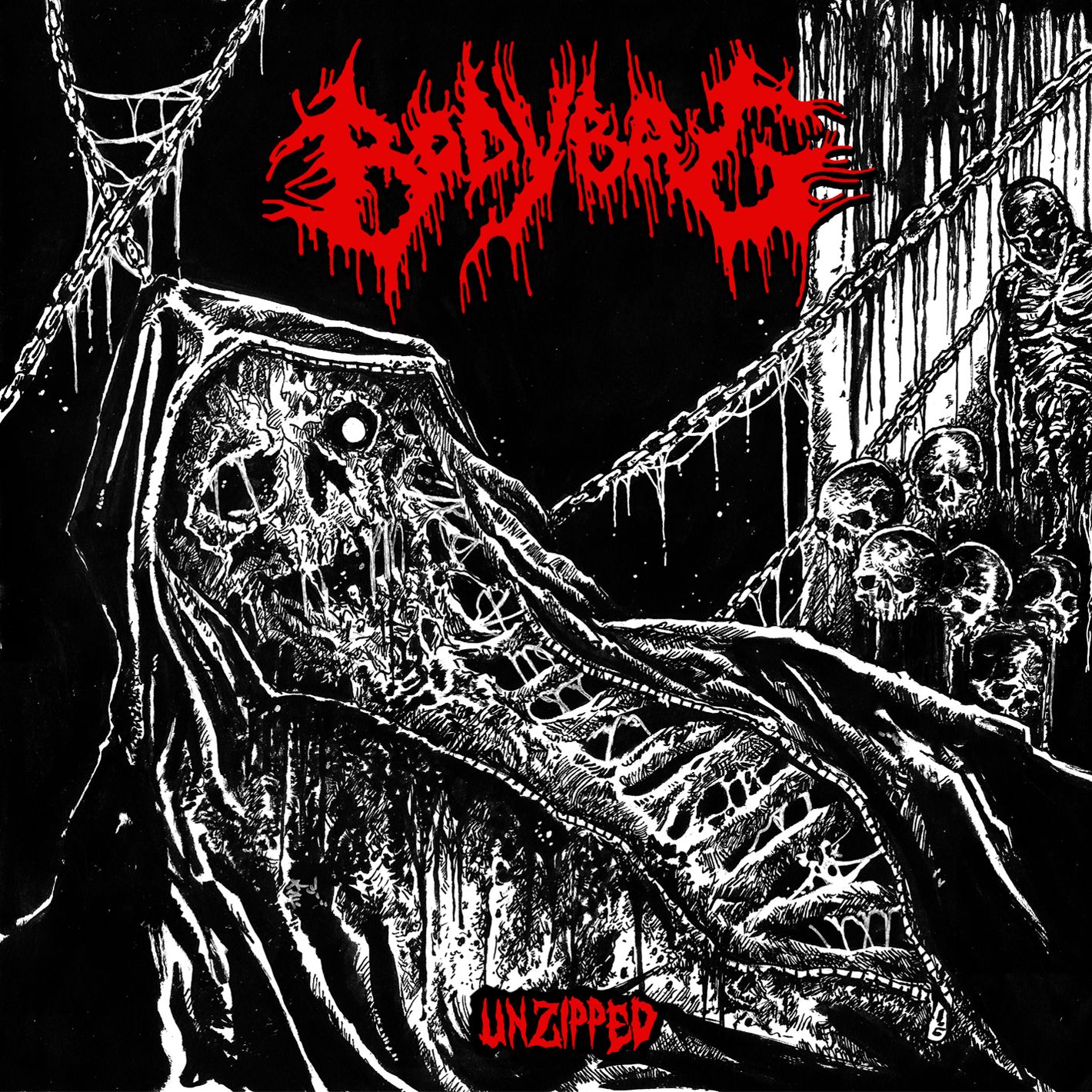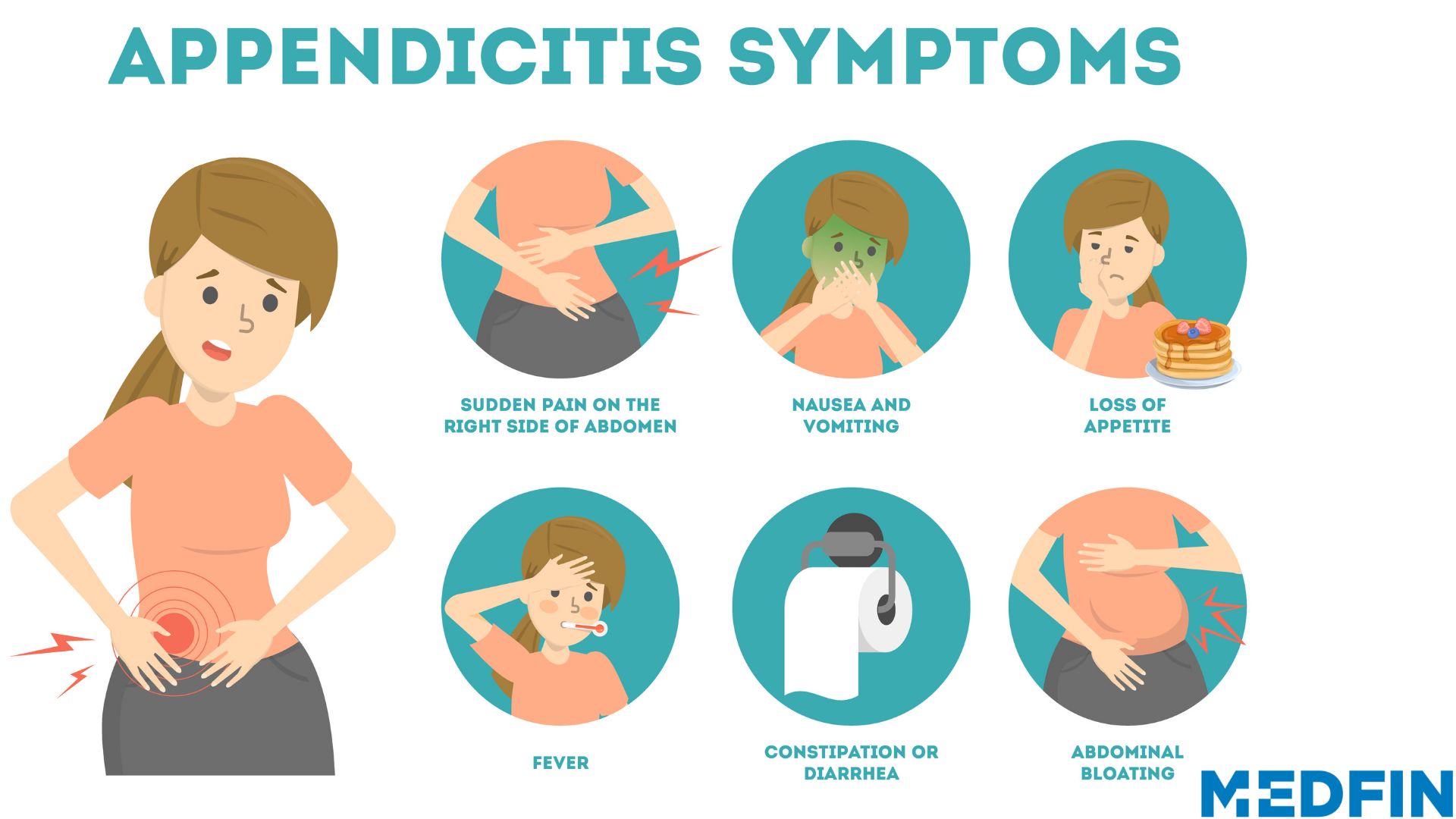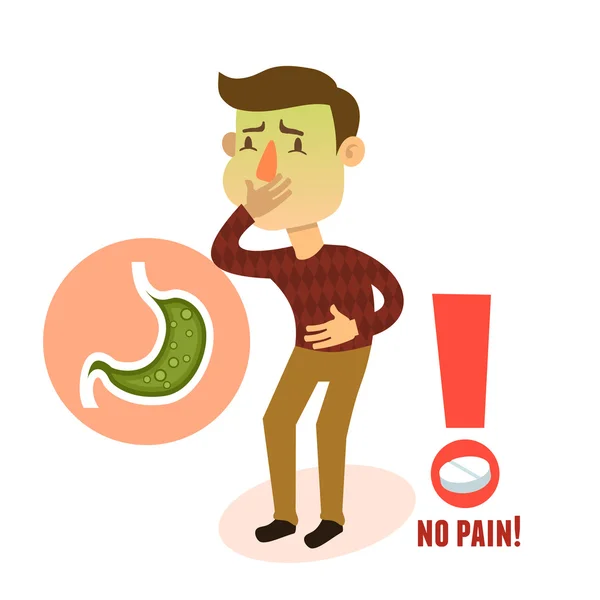Nausea with Chantix: Chantix Side Effects and How to Avoid Them
What are the common side effects of Chantix? How can you avoid them? Get the answers to these questions and more in this comprehensive article.
Common Chantix Side Effects
Chantix (varenicline) is a prescription medication used to help people quit smoking. While it can more than double the chance of success in quitting smoking, Chantix does come with some side effects that users should be aware of. The most common side effects of Chantix include:
- Nausea, vomiting, upset stomach, appetite change, or abdominal pain
- Flatulence, diarrhea, or constipation
- Dry mouth or taste disturbance
- Insomnia, abnormal dreams, or sleep disorder
- Malaise, fatigue, or somnolence (sleepiness)
- Headache
- Emotional disturbance
- Shortness of breath or respiratory disorders
- Skin rash
Nausea with Chantix
The most common adverse reaction to Chantix is nausea, which studies have estimated to occur in about 25% of individuals. Typically, the nausea is mild, occurs within the first two weeks, and often resolves with time. If the nausea is persistent or worsening, or if it is accompanied by vomiting, it is recommended to consult your prescriber for medical advice.

Appetite Change with Chantix
One of the biggest concerns among smokers who are considering quitting is the potential for weight gain. While weight gain after stopping smoking averages five to 10 pounds, individual experiences can vary considerably. In fact, about 20% of those who quit may lose weight. Chantix users may actually experience either an increase or decrease in appetite, but neither one occurs in more than 5% of users. Ultimately, Chantix does not seem to significantly affect the chance of weight gain with smoking cessation.
Vivid Dreams and Nightmares with Chantix
A variety of sleep-related disturbances have been described with Chantix. These disturbances can range from unusual dreams to trouble sleeping. Most commonly, abnormal dreams are experienced by about 10% of those taking the drug, and nightmares or sleep disorders are reported by another 1% to 3%. Small numbers of case reports have described sleepwalking that involved harmful activities. Sleep problems may also be an aspect of nicotine withdrawal after quitting smoking.

Serious Side Effects of Chantix
In addition to the common side effects, Chantix has also been associated with some more serious side effects, including:
- Depression or neuropsychiatric disorder
- Suicidal behavior or thoughts
- Homicidal thoughts
- Hypersensitivity allergic reaction or angioedema (swelling of the face or body)
- Serious skin reactions such as Stevens-Johnson Syndrome (includes blisters and peeling skin) or erythema multiforme
- Arrhythmia (heart rhythm problem), heart attack, stroke, or angina (chest discomfort)
- Seizure
- Photosensitivity (light sensitivity)
- Vision changes
- Anemia or thrombocytopenia (low platelet or clotting cell count)
- Kidney stones or kidney failure
- Gastrointestinal bleeding
- Pancreatitis (pancreas inflammation)
- Hypokalemia (low potassium level)
Depression and Chantix
Case reports of depressed mood and even suicidal thoughts and aggressive behavior came to light after the release of Chantix. The Food and Drug Administration (FDA) responded by adding a black box warning on Chantix in 2009 about this risk. A subsequent study examined these potential concerns in detail and did not find an elevated risk of these adverse effects compared to other smoking cessation medications or even a placebo. The FDA removed the black box warning from Chantix in 2016.

Cardiovascular Side Effects of Chantix
Chantix has labeling that warns about use by those with known cardiovascular disease. The labeling arose due to some study data showing a small increased risk of life-threatening cardiovascular events with Chantix. An analysis of multiple clinical trials did not corroborate this concern, however, as rates of cardiovascular events were similar between those taking and not taking Chantix. Furthermore, the FDA concluded that the overall benefits of Chantix outweigh the potential risks for most smokers, including those with cardiovascular disease.
Chantix side effects and how to avoid them
Chantix side effects include nausea, appetite change, and vivid dreams. Learn more about these side effects and the Chantix recall.
Common Chantix side effects | Nausea | Appetite change | Vivid dreams | Serious side effects | Depression | Cardiovascular side effects | How long do side effects last? | Warnings | Interactions | How to avoid side effects
Smoking cessation has an array of benefits, including reductions in cancer rates, lung disease, heart attack and stroke risk, and all-cause mortality. Succeeding with a quit attempt can be exceedingly difficult, but the unique smoking cessation medication Chantix (varenicline) can more than double the chance of success. Zyban (bupropion) and over-the-counter nicotine replacement therapies, such as Nicoderm CQ nicotine patches, are a couple of the alternative options to help quit smoking.
Chantix attaches to nicotine receptors in the brain as a partial agonist, both reducing the craving for nicotine and blocking the pleasure of smoking. While it is enticing to double the chance of achieving the array of smoke-free health benefits, there are some side effects with Chantix which must be considered. This article will explore Chantix side effects and provide tips for avoiding them.
While it is enticing to double the chance of achieving the array of smoke-free health benefits, there are some side effects with Chantix which must be considered. This article will explore Chantix side effects and provide tips for avoiding them.
Common side effects of Chantix
- Nausea, vomiting, upset stomach, appetite change, or abdominal pain
- Flatulence, diarrhea, or constipation
- Dry mouth or taste disturbance
- Insomnia, abnormal dreams, or sleep disorder
- Malaise, fatigue, or somnolence (sleepiness)
- Headache
- Emotional disturbance
- Shortness of breath or respiratory disorders
- Skin rash
Nausea
The most common adverse reaction to Chantix is nausea, which studies have estimated to occur in about 25% of individuals. Typically, the nausea is mild, occurs within the first two weeks, and often resolves with time. Persistent or worsening nausea or if nausea is accompanied by vomiting, consult your prescriber for medical advice.
Persistent or worsening nausea or if nausea is accompanied by vomiting, consult your prescriber for medical advice.
Appetite change
One of the biggest concerns amongst smokers who are considering quitting is that they will gain weight. While weight gain after stopping smoking averages five to 10 pounds, individual experiences can vary considerably. In fact, about 20% of those who quit may lose weight.
Based on the concern regarding weight gain, interest in whether Chantix mitigates or worsens this risk is natural. Chantix users may actually experience either an increase or decrease in appetite, but neither one occurs in more than 5% of users. Ultimately, Chantix does not seem to significantly affect the chance of weight gain with smoking cessation.
Vivid dreams and nightmares
A variety of sleep-related disturbances have been described with Chantix. These disturbances can range from unusual dreams to trouble sleeping. Most commonly, abnormal dreams are experienced by about 10% of those taking the drug, and nightmares or sleep disorders are reported by another 1% to 3%. Small numbers of case reports have described sleepwalking that involved harmful activities.
Small numbers of case reports have described sleepwalking that involved harmful activities.
Sleep problems may also be an aspect of nicotine withdrawal after quitting smoking. Withdrawal symptoms after smoking cessation may also include cravings to smoke, increased appetite, sadness, irritability, restlessness, and difficulty concentrating.
Serious side effects of Chantix
- Depression or neuropsychiatric disorder
- Suicidal behavior or thoughts
- Homicidal thoughts
- Hypersensitivity allergic reaction or angioedema (swelling of the face or body)
- Serious skin reactions such as Stevens-Johnson Syndrome (includes blisters and peeling skin) or erythema multiforme
- Arrhythmia (heart rhythm problem), heart attack, stroke, or angina (chest discomfort)
- Seizure
- Photosensitivity (light sensitivity)
- Vision changes
- Anemia or thrombocytopenia (low platelet or clotting cell count)
- Kidney stones or kidney failure
- Gastrointestinal bleeding
- Pancreatitis (pancreas inflammation)
- Hypokalemia (low potassium level)
Depression
Case reports of depressed mood and even suicidal thoughts and aggressive behavior came to light after the release of Chantix. The Food and Drug Administration (FDA) responded by adding a black box warning on Chantix in 2009 about this risk. A subsequent study examined these potential concerns in detail and did not find an elevated risk of these adverse effects compared to other smoking cessation medications or even a placebo. The FDA removed the black box warning from Chantix in 2016.
The Food and Drug Administration (FDA) responded by adding a black box warning on Chantix in 2009 about this risk. A subsequent study examined these potential concerns in detail and did not find an elevated risk of these adverse effects compared to other smoking cessation medications or even a placebo. The FDA removed the black box warning from Chantix in 2016.
Cardiovascular side effects
Chantix has labeling that warns about use by those with known cardiovascular disease. The labeling arose due to some study data showing a small increased risk of life-threatening cardiovascular events with Chantix. An analysis of multiple clinical trials did not corroborate this concern, however, as rates of cardiovascular events were similar between those taking and not taking Chantix. Furthermore, the FDA has noted that the benefits and risks of taking Chantix must be considered since smoking cessation is particularly improvement for those with cardiovascular disease.
How long do Chantix side effects last?
The duration of Chantix side effects can vary. Most side effects resolve when the medication is discontinued. In fact, immediate discontinuation is advised if one experiences mood changes while on Chantix. On the contrary, mild nausea may improve with time alone, even if Chantix is continued.
Most side effects resolve when the medication is discontinued. In fact, immediate discontinuation is advised if one experiences mood changes while on Chantix. On the contrary, mild nausea may improve with time alone, even if Chantix is continued.
Chantix contraindications and warnings
Chantix is not habit-forming.
Based on the concern for cardiovascular or neurological side effects, an overdose of Chantix warrants emergency medical attention and a call to the Poison Help line at 1-800-222-1222. Case reports are limited, but one report lists a fatality with overdose, although additional factors were present.
Anyone with a history of hypersensitivity (allergy) to varenicline should not take Chantix. Cautious consideration and discussion with a healthcare professional are needed before taking Chantix for anyone with a seizure history or risk, cardiovascular disease, psychiatric illness, alcohol use, or renal impairment (kidney disease) with a creatinine clearance of less than 30 mL/minute. Age is another consideration as Chantix is only used in those 17 years and older. Lack of clinical trials in pregnancy and breastfeeding means that caution is needed before using the drug in these circumstances.
Age is another consideration as Chantix is only used in those 17 years and older. Lack of clinical trials in pregnancy and breastfeeding means that caution is needed before using the drug in these circumstances.
A recall on all brand-name Chantix was announced by Pfizer in 2021.
Chantix interactions
Medications that raise the risk of seizure are the primary drug interaction of note for Chantix and may need to be avoided or modified when taking Chantix. Examples of these medications include amifampridine, bupropion, and tramadol.
Concurrent nicotine use may increase the risk of headaches, nausea, vomiting, and dizziness.
Chantix may increase the effects of alcohol by lowering alcohol tolerance. Therefore, alcohol use should be curtailed or avoided.
How to avoid Chantix side effects
- Carefully follow the instructions on taking Chantix, as the dosing is typically initiated at a low dose of 0.5 mg once daily for three days and then twice daily for four days, before increasing to the full 1 mg dose twice daily thereafter.
 This titration may help to avoid side effects at initiation. If you’re unsure how to take Chantix, ask a pharmacist to review the medication guide with you. The manufacturer also provides drug information.
This titration may help to avoid side effects at initiation. If you’re unsure how to take Chantix, ask a pharmacist to review the medication guide with you. The manufacturer also provides drug information. - Set a quit date for stopping smoking, often on day eight of Chantix therapy. However, some healthcare professionals may advise gradual discontinuation or a flexible quit date.
- Chantix is usually taken for at least 12 weeks of treatment, but the end of treatment may be individualized.
- Take the medication with a full glass of water after a meal to potentially reduce the chance of nausea.
- Carefully review your health history with the treating medical provider, especially taking time to discuss any history of cardiovascular or mental health problems.
- Avoid concurrent alcohol use.
- Immediately tell your healthcare provider or seek medical attention if any mood changes, suicidal ideation, chest pain, or harmful sleep disorders are experienced while taking Chantix.

Titration May Reduce Nausea from Anti-Smoking Drug
by
Jeff Minerd, Contributing Writer, MedPage Today
August 15, 2006
FARMINGTON, Conn., Aug. 15 — Many patients taking Chantix (varenicline tartrate) to help kick the smoking habit could be spared the side effect of nausea if introduced to the drug gradually, according to researchers here.
Titrating the dose of Chantix during the first week of treatment led to a drop of six to seven percentage points in the proportion of patients who became nauseated, said Cheryl Oncken, M.D., of the University of Connecticut Health Center here.
- Be aware that this study suggests that titrating doses of Chantix over the course of the first week of therapy may help prevent nausea in some patients who are trying to quit smoking.
Nausea is a common side effect that sometimes causes patients to discontinue treatment, Dr. Oncken and colleagues reported in the Aug. 14-28 issue of the Archives of Internal Medicine. The study was supported by Pfizer, which makes Chantix. Pfizer was involved in all elements of this study, including, but not limited to, the study design and monitoring.
Oncken and colleagues reported in the Aug. 14-28 issue of the Archives of Internal Medicine. The study was supported by Pfizer, which makes Chantix. Pfizer was involved in all elements of this study, including, but not limited to, the study design and monitoring.
The study included nearly 650 patients who smoked an average of 21 cigarettes per day for an average of 25 years. Participants were randomized to a placebo group or one of four treatment groups: 0.5 mg Chantix non-titrated, 0.5 mg Chantix titrated, 1.0 mg Chantix non-titrated, 1.0 mg Chantix titrated.
In both titrated groups, the dose started out at 0.5 mg once daily. Over the course of seven days, the dose was gradually escalated to the full target dose, given twice-daily. The study followed participants as they attempted to quit smoking for 12 weeks, which is the usual course of treatment with Chantix, and then for an additional 40 weeks for a total follow-up of one year.
During treatment, 42% of the non-titrated 1. 0 mg group became nauseated, versus 34% of the 1.0 mg titrated group (P not given). About 15% of the placebo group had nausea (P
0 mg group became nauseated, versus 34% of the 1.0 mg titrated group (P not given). About 15% of the placebo group had nausea (P
In addition, 23% of the non-titrated 0.5 mg group experienced nausea versus 16% of the titrated 0.5 mg group (P not given). Neither of these nausea rates differed significantly from the placebo rate (P=0.12 for the non-titrated group; P=0.86 for the titrated group).
Although the researchers did not report P values for the different nausea rates in the titrated versus non-titrated dosage groups, they concluded that “titration during the first week of treatment appeared to reduce the incidence of nausea.”
The smoking abstinence rate through week 52 of the study, confirmed by breath measurements of carbon monoxide, was 4% for the placebo group, 22% for all patients receiving 1.0 mg twice daily (PP
Chantix was approved by the FDA last May 11. The drug is thought to be an a4ß2 nicotine receptor antagonist, blocking the rewarding effects of nicotine. But the drug is also believed to be a partial agonist to this receptor, stimulating enough dopamine release to reduce nicotine withdrawal cravings.
But the drug is also believed to be a partial agonist to this receptor, stimulating enough dopamine release to reduce nicotine withdrawal cravings.
In an accompanying editorial in the Archives, Bankole A. Johnson, D.Sc., M.D., Ph.D., of the University of Virginia called Chantix a welcome alternative to nicotine replacement therapy and Zyban (bupropion) for doctors trying to help patients quit smoking.
“Varenicline was well-tolerated and promises to be more effective in clinical practice than bupropion,” Dr. Johnson said. “Now, a smoker who wants help to quit no longer has a legitimate excuse to delay seeking treatment.”
Four of the authors reported a variety of financial relationships with Pfizer and an additional four authors are employees of Pfizer.
Primary Source
Archives of Internal Medicine
Source Reference: Oncken C et al. “Efficacy and safety of the novel selective nicotinic acetycholine receptor partial agonist, varenicline, for smoking cessation. ” Arch Intern Med 2006; 166:1571-1577.
” Arch Intern Med 2006; 166:1571-1577.
Secondary Source
Archives of Internal Medicine
Source Reference: Johnson B. “New weapon to curb smoking: No more excuses to delay treatment.” Arch Intern Med 2006; 166:1547-1550.
Please enable JavaScript to view the comments powered by Disqus.
Treatment of nausea and dizziness in cervical osteochondrosis
Articles
Reading time 10 min
Shutterstock.com
a sign of compression of the vertebral arteries. Such complaints require a timely referral to a specialist to find out whether nausea is caused by osteochondrosis. Most people try to eliminate uncomfortable sensations on their own. As a result, late treatment and the development of complications.
Persistent nausea in osteochondrosis requires immediate treatment. Therefore, we recommend that you contact a qualified specialist at the Temed Clinic by signing up for a consultation at +7 (800) 775-38-67.
This article is advisory in nature. Treatment is prescribed by a specialist after consultation.
Can you feel sick with osteochondrosis
With cervical osteochondrosis, nausea usually accompanies dizziness. These complaints may occur with vertebrobasilar insufficiency – compression of the vertebral arteries. To understand why this causes nausea, you need to understand how the blood supply to the brain works.
The cerebral hemispheres receive blood from branches of the carotid arteries. And the stem structures and lower sections are fed from the vertebral arteries: these vessels are located in the bone canal formed by the cervical vertebrae and enter the cranial cavity, uniting into the basilar artery. With pronounced changes in the vertebrae and intervertebral discs, the vessels can be compressed. This pathology is manifested by sudden dizziness, nausea and tinnitus when tilting or turning the head.
Nausea in osteochondrosis of the cervical spine can also occur with severe, unbearable pain as a protective reaction.
In some cases, nausea can indeed be associated with osteochondrosis. But more often it is caused by diseases of the gastrointestinal tract:
stagnation of bile in the gallbladder, liver ducts, resulting in impaired excretion into the duodenum and digestion of food thyroid gland with food digestion enzymes
gastric or duodenal ulcer, resulting in impaired production of gastric juice, digestion and evacuation of the food bolus
reflux of stomach contents into the esophagus s, due to which the movement of food is disturbed
Another cause of nausea can be diseases of the pharynx and larynx, accompanied by spasms and swelling. In this case, a strong cough can occur, as well as bouts of nausea and even vomiting.
Symptoms
In osteochondrosis of the cervical spine, the most common complaint is pain, which can radiate to the back of the head, arms, or be local. If the altered structures of the spinal column compress the vertebral arteries, the patient is troubled by the following symptoms:
If the altered structures of the spinal column compress the vertebral arteries, the patient is troubled by the following symptoms:
1
naya pain
3
Unbalance, feeling unsteady when walking 3
Muscle weakness of the arms, sometimes legs
Which doctor to contact
Choice specialist depends on the characteristics of the development of the disease and symptoms. The treatment of osteochondrosis is carried out by a neurologist. In case of nausea caused by an unknown cause, you should contact a therapist who will conduct a visual examination, prescribe diagnostic procedures for the patient, and, if necessary, refer him for a consultation with a specialized doctor.
Make an appointment with a neurologist
Appointment lasts 60 minutes, includes diagnostics, analysis of your MRI and preparation of a treatment plan, takes place both in person and online.
Diagnosis
Diagnosis of osteochondrosis begins with the initial appointment with a specialist. The doctor clarifies complaints, the circumstances of their occurrence, and also asks about chronic diseases, past injuries, infections, operations, and medications taken. Then he conducts a visual examination, palpation of the back, abdomen, assesses the neurological status, measures body temperature, blood pressure and pulse. At this stage, the doctor establishes a preliminary diagnosis, to clarify which he may recommend an additional examination. The main role in the study of the spine is assigned to radiography, computed tomography and magnetic resonance imaging, which determine the level of damage, specify the diagnosis, and reveal hidden pathologies. These diagnostics allow the attending physician to determine the tactics of treatment and choose the most effective methods of treatment.
At the initial stage of diagnosis in the Temed Clinic, diseases of the gastrointestinal tract, which may be associated with nausea, are excluded, for this purpose the following types of examination are prescribed:
- barium contrast
- Laboratory tests: complete and biochemical blood tests, urinalysis, stool tests
Nausea in osteochondrosis: treatment
Treatment of nausea in osteochondrosis depends on the stage of development of the disease, the severity of the clinical picture, the general well-being of the patient. In the early stages of the disease, conservative therapy is used for treatment. In the later stages, surgery may be required followed by a course of rehabilitation.
In the early stages of the disease, conservative therapy is used for treatment. In the later stages, surgery may be required followed by a course of rehabilitation.
Conservative therapy
The following methods are used to treat osteochondrosis and its accompanying symptoms:
Taking medication. In the acute stage, non-steroidal anti-inflammatory drugs are prescribed, which help relieve pain, inflammation and swelling. Antihypertensive drugs are recommended for high blood pressure. With a strong attack of nausea, antiemetics are used.
- Physiotherapy is a mandatory part of complex therapy. For osteochondrosis, apply:
- Laser therapy with a highly effective and safe device MLS M6, widely used in clinics in Germany and the USA. This laser is approved by the US Department of Health and Human Services (FDA). It has decongestant, anti-inflammatory, and analgesic effects, making it the gold standard of efficacy among therapeutic lasers and minimizing the risk of thermal damage sometimes seen with other manufacturers
- Shock wave therapy to improve spinal mobility and tissue nutrition
- BTL SIS magnetotherapy.
 This is a technology based on exposure to a high-intensity electromagnetic field. Helps in the treatment of acute and chronic pain in muscles and joints, improves spinal mobility
This is a technology based on exposure to a high-intensity electromagnetic field. Helps in the treatment of acute and chronic pain in muscles and joints, improves spinal mobility - Acupuncture is a procedure in which special sterile needles are inserted into biologically active points. This leads to a change in the intensity of metabolic processes, reduces pain, relieves muscle tone
Massage. Improves tissue nutrition, increases joint mobility. Especially effective for chronic pain. In the presence of inflammation, massage is strictly prohibited!
exercise therapy: strengthens the musculoskeletal corset, improves joint mobility, contributes to the correct distribution of the load on the spine, and with regular exercise helps prevent the progression of the disease. A set of exercises is selected by the doctor individually for each patient, and also controls the correctness of their implementation.
Surgical treatment
If conservative methods are ineffective for a long time or the disease is detected in the late stages, then a surgeon’s consultation is necessary to decide on surgical treatment.
How to relieve nausea in osteochondrosis
If nausea attacks periodically begin, you can use the following algorithm to help yourself or your loved ones suffering from a similar symptom:
Open the airway: unfasten or remove tight clothing
Lie on your back or on your side, with a firm surface so that the spine is in the correct position
Ventilate the room
Drink water with lemon
Check blood pressure, take a pill if necessary
If nausea does not go away within half an hour, call an ambulance
Consequences
Persistent weakness, numbness in the limbs, severe dizziness, nausea, dysfunction of the pelvic organs – signs of impaired cerebral or spinal circulation. This is a rare but formidable complication of osteochondrosis. As a result of an acute circulatory disorder (stroke), a person loses his ability to work and becomes virtually disabled.
Prevention
To prevent osteochondrosis, the following recommendations should be followed:
Choose the right orthopedic products – mattresses, pillows, shoe insoles
Exercise regularly. This can be swimming, dancing, which strengthens the muscles of the chest, back and shoulders
Move more, walk in the fresh air
When carrying weights, evenly distribute the weight on both hands or carry them in a backpack with shoulder straps on both shoulders
The workplace should be comfortably equipped in such a way that the back is straight, leaning on the back of the chair
Eat a balanced diet, eat fish, fresh vegetables and fruits, milk, cottage cheese, sour cream and other dairy products
CV 0003
Most often, nausea is not associated with osteochondrosis and is caused by diseases of the gastrointestinal tract. To identify the true causes of the symptom, you need to undergo an examination. This is a rare and dangerous complication
To identify the true causes of the symptom, you need to undergo an examination. This is a rare and dangerous complication
3
Nausea and severe dizziness in osteochondrosis are an alarming sign. With these symptoms, you need to urgently consult a doctor
Multidisciplinary approach to a patient with chronic pain. breast cancer. 2018; 7:28–32.
Use the chat on the site to get a response within 5 minutes . Choose a communication channel convenient for you to communicate with the operator.
Share on social networks:
What to do if you feel sick with osteochondrosis
Spinal osteochondrosis is a complex pathology. When the disease affects the intervertebral cartilage, most often the cervical region. The problem lies in the difficulty of diagnosing, since the symptoms can resemble completely different diseases. Patients often feel sick with osteochondrosis, dizziness appears. Consider the features of the disease, learn how to relieve nausea in osteochondrosis.
When the disease affects the intervertebral cartilage, most often the cervical region. The problem lies in the difficulty of diagnosing, since the symptoms can resemble completely different diseases. Patients often feel sick with osteochondrosis, dizziness appears. Consider the features of the disease, learn how to relieve nausea in osteochondrosis.
How cervical osteochondrosis manifests itself
Many patients with this disease turn to specialists when the disease is already running. Cervical osteochondrosis is a serious disease. The success of treatment depends on when the person seeks help.
The first thing to alert is pain, discomfort in the neck. This part of the spine experiences constant serious stress, while here the muscular corset is weak, and the spinal canal is narrow. You can not close your eyes to the first symptoms of cervical osteochondrosis – nausea, weakness, tingling in the back of the head, in the upper limbs. If timely treatment is not started, serious complications can occur that will lead to disability.
Symptoms come on gradually:
- dizziness;
- pain in the collar zone;
- tinnitus, extraneous sounds when changing body position;
- weakness;
- lack of air;
- vision worsens;
- pressure often rises;
- sensation of a lump in the throat.
These are the most common symptoms of the disease, which should prompt the patient to seek help from the clinic, start an examination with further treatment.
Causes of nausea in cervical osteochondrosis
If the patient has not yet been diagnosed, does not know about his disease, he may regard nausea as problems with the gastrointestinal tract, pressure, but not with the spine. With osteochondrosis, an insufficient amount of nutrients from the bloodstream enters the brain. This can cause weakness, dizziness. Due to the lack of glucose, oxygen, puffiness develops, pressure rises.
Due to the lack of glucose, oxygen, puffiness develops, pressure rises.
With osteochondrosis of the spine, nausea requires prompt treatment, because the patient’s quality of life is deteriorating due to constant poor health. The mechanism of the development of the disease and the appearance of unpleasant symptoms:
- There is a deformation of the holes through which the arteries pass.
- Deformation changes in the intervertebral discs lead to impaired blood supply.
- Due to the lack of arterial blood supply, compensation begins in the form of narrowing of the arteries.
- The person’s blood pressure is rising.
- Due to the release of cortisol and other hormones that increase blood pressure, dizziness and nausea appear.
Thus, the causes of nausea in osteochondrosis are a response to a deformity in the spine that develops during the course of the disease. The danger is that permanent disruption of blood flow to the brain can lead to ischemic stroke and disability.
The danger is that permanent disruption of blood flow to the brain can lead to ischemic stroke and disability.
In addition, with osteochondrosis, nausea and weakness can be functional, caused by a violation of the process of innervation due to deformations of the intervertebral cartilage. This can cause the following pathologies in the body:
- stagnation and violation of the outflow of bile;
- stomach cramps;
- gastric valve disease;
- Aperture reduction.
In connection with this, a person becomes sick, weakness appears. But with cervical osteochondrosis, there is another factor that causes nausea – neurosis of the pharynx and larynx. Because of this, the mucous membrane is constantly irritated, swells, which leads to poor health, causes vomiting.
Why does nausea occur in osteochondrosis of the thoracic region
If the connection of pathology in the cervical region with poor health is obvious, then many people have a question – is there nausea in thoracic osteochondrosis. Unfortunately, due to the innervation of the digestive tract, this problem can also be.
Unfortunately, due to the innervation of the digestive tract, this problem can also be.
Often in patients with thoracic osteochondrosis, the thyroid gland suffers, which begins to produce thyroid-stimulating hormone in excess of the norm. This leads to intoxication of the body. In this regard, it becomes clear whether there can be nausea with osteochondrosis, and because of what this happens.
How to overcome nausea in osteochondrosis of the neck
Before answering the question of how to get rid of nausea in osteochondrosis, it is important to understand that this is only a symptom. Treatment of the spine and joints should be in the first place in order to prevent complications of the disease caused by cerebrovascular accidents.
If nausea occurs intermittently, the following recommendations can be used:
- clear the airway: unfasten or remove tight clothing;
- lie on your back or on your side, while the surface must be firm so that the spine takes the correct position;
- ventilate the room;
- drink water with lemon;
- check the pressure, if necessary, take a tablet;
- If nausea does not go away within half an hour, you should call an ambulance.

If the attack of “lightheadedness” is permanent, not relieved by the above methods, do not underestimate this symptom. He can talk about a serious violation of cerebral circulation.
Diagnosis and treatment
To start treating nausea in cervical osteochondrosis, you need to find out what causes it and what causes it. To do this, the doctors of our clinic conduct a thorough examination, after which it will become clear how to treat the patient in order to bring his condition to a more stable one, to relieve dizziness.
Diagnosis in the clinic involves the following types of examination:
- Body temperature and pressure are measured.
- The tongue is examined for the presence of plaque or its absence (if there is plaque, then nausea is most likely caused by problems with the gastrointestinal tract).
- The presence of pain in the spine is detected, followed by treatment by narrow specialists (vertebrologist, neurologist, chiropractor).

Without a comprehensive examination, it will not be possible to name the exact causes of nausea and prescribe an effective treatment, since this is a common symptom. As soon as the specialist finds out the exact cause of poor health, appropriate treatment is prescribed.
What to do about nausea due to cervical osteochondrosis – treat the root cause, and not try to “repay” the symptoms. In order to start feeling good again, it is important to restore blood circulation in the posterior arteries of the spine. For this, massages, reflexology in combination with drug treatment are prescribed.
If nausea and vomiting in osteochondrosis is caused by innervation, it is necessary to release the radicular nerves. Doctors use the method of stretching the spinal column in combination with exercise therapy, massages.
Prevention of cervical osteochondrosis
Many people understand that any disease is better to prevent than to treat. Osteochondrosis is also no exception.

 This titration may help to avoid side effects at initiation. If you’re unsure how to take Chantix, ask a pharmacist to review the medication guide with you. The manufacturer also provides drug information.
This titration may help to avoid side effects at initiation. If you’re unsure how to take Chantix, ask a pharmacist to review the medication guide with you. The manufacturer also provides drug information.
 This is a technology based on exposure to a high-intensity electromagnetic field. Helps in the treatment of acute and chronic pain in muscles and joints, improves spinal mobility
This is a technology based on exposure to a high-intensity electromagnetic field. Helps in the treatment of acute and chronic pain in muscles and joints, improves spinal mobility
